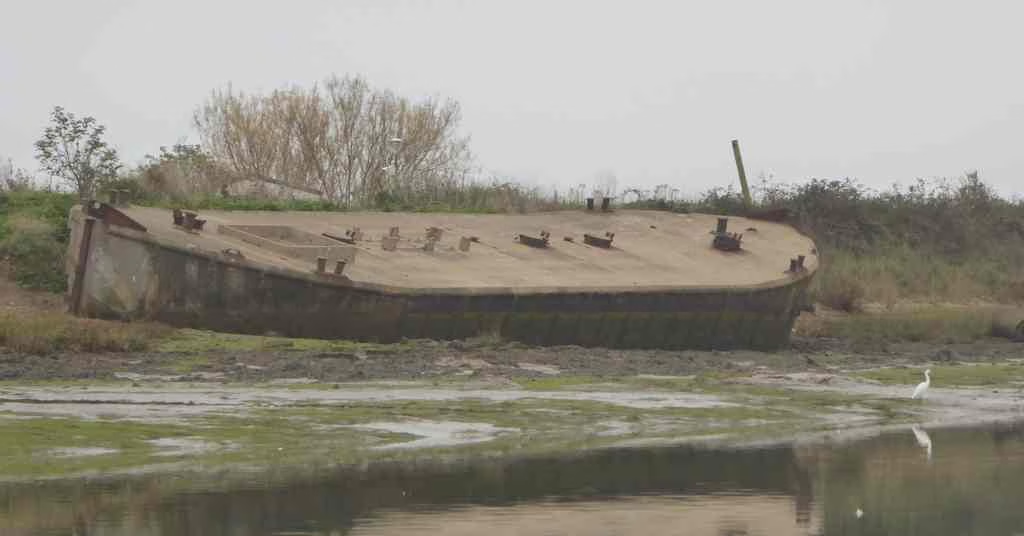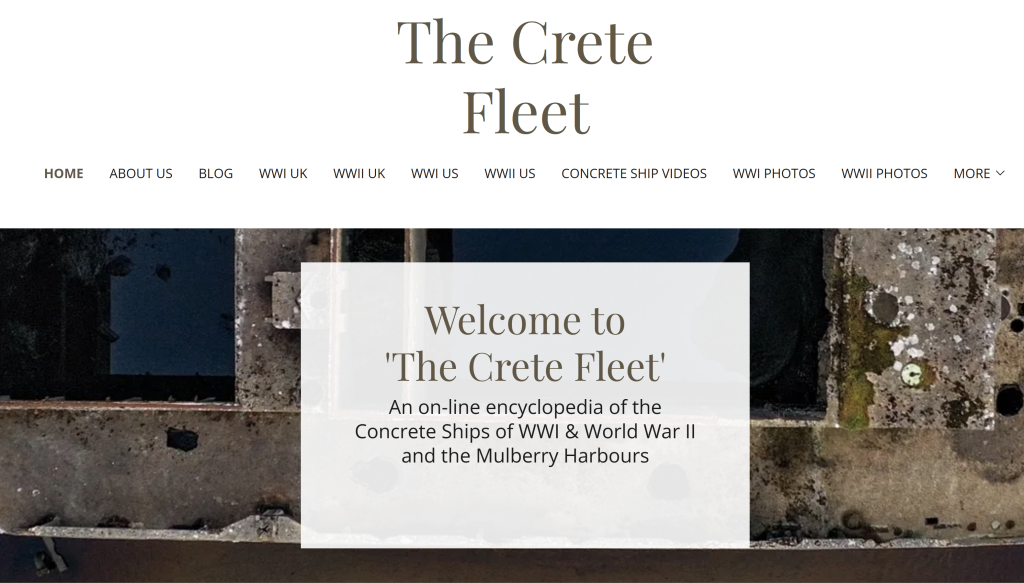
The first vessels of this type investigated turned out to be metal lighters: I’d been passing them for years assuming them to be concrete. It was through contacting Richard Lewis, who writes on the subject and has www.thecretefleet.com website, that the subject became clearer. Working from Northern Ireland he has identified perhaps all of the remaining examples and knows the detailed history of many. Not wanting to reinvent the wheel, I attempt to supply him with photographs for those on the East Coast and link to his comprehensive and authoritative website articles.
According to www.thecretefleet.com there were four hundred and ninety-five ferro-concrete barges (FCBs) built during World War Two. These were originally intended for use in the invasion of France.
It seems that none of the petrol barges were used for the Normandy landings as they did not perform well in a test and, in any case, better solutions were found. The open barges were utilised around the British coast. Both types had a range of uses after the War.
There were initially two types, the Ritchie design is 81’9″/21’8″ or 25.9m/6.5m length/beam and the, larger, Mouchel design at 84’/22’6″ or 25.6m/6.7m length/beam. Both types were built initially but the Mouchel design was adopted. Most FCBs had a Stem Head, this means that the bow quarters meet in a vertical ‘stem’. However, fifty were built with a ‘swim’ head where the bow is an upward facing inclined plane: these were preferred for the Thames. In total 295 open FCBs were built, an initial batch of 40, then 255 more, from which one was used as a prototype PCB, see below.
PCBs, or Petrol Concrete Barges, were adapted from the Mouchel design and had the same dimensions. There were 201 PCBs including the prototype.
Originally all had painted hull numbers, but these are long gone. Along the side of the hull were ash rubbing strakes, affixed by bolts. On some of the surviving FCBs these are still in good condition.
FCBs, despite their size, seem to hide in plain sight. The one at Titchmarsh, for example, is not obviously an example.
There are more FCBs to be covered on the Essex Rivers: at West Mersea, Fambridge, Barling Hall Creek, Burnham-on-Crouch, and Rainham Marshes as well as ‘Concretion’ (National Historic Ships website gives very good background) at Lowestoft. None are known on the Deben, Ore, or Alde.
There are quite a few on the Medway and at Rainham Marshes. All of the FCBs and PBs found in the Southeast are Mouchel design and were built by Wates at West India Docks1Note from Richard Lewis theCreteFleet.
Other ferro concrete structures exist in the Estuary such as Roughs Tower and the Pheonix unit on Maplin Sand.
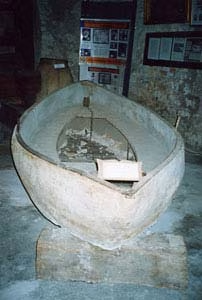
The first ferro concrete boat was made by Joseph-Louis Lambot in France in 1848. Next, Joseph Monier, starting with concrete flower pots, developed and patented techniques for using reinforced concrete in buildings. From there, in 1892, François Hennebique, developed the ‘Hennebique System’ for reinforced concrete. The system, licensed to Mouchel, was used in Britain from the late nineteenth century2A Brief History of Reinforced Concrete Buildings – The Historic England Blog: it was used by Maunsell as ‘Hennebique Concrete’ appeared on his drawings3Email communication with P.Stebbings 2024.
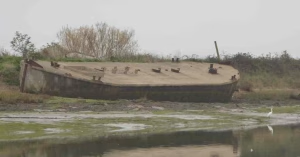
Ferro Concrete Barges (FCBs) Introduction
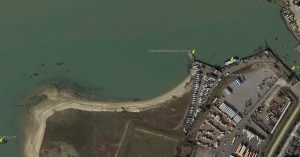
Ferro Concrete Barges on the Stour
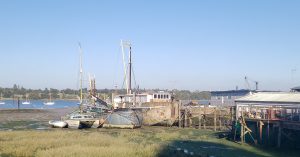
Ferro Concrete Barges on the Orwell
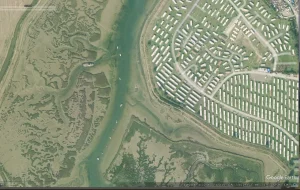
Ferro Concrete Barges in Walton Backwaters
Map view of FCBs
Sources for FCBs
www.thecretefleet.com has a lot of explanations and debunks the D-day connection.
An excellent account of the Canvey example and history of the type by Richard Lewis who has the site below:
Some photos of the ones at Rainham
Ferro Concrete Cargo Barge | Imperial War Museums (iwm.org.uk)
www.concretebarge.co.uk/frames/index.htm – More photos. Includes a plan but it may not be the same type. Some issues with the D-Day history.
Name FCB 52 | National Historic Ships
Surviving Ferro-Concrete Barges? – Naval section – HMVF – Historic Military Vehicles Forum
FCB 52 – Friends of Purton – lists quite a few numbers.
Boats Made of Concrete? – Glen-L Marine – some of the information regarding use is questioned by thecretefleet site.
Canvey Concrete Barge – Beyond the Point – This one is now blown up! The story needs correction.
CANALSIDE CAMERA – plans and some locations.
World War II Ferro-Concrete Barges – ClydeMaritime Forum (clydemaritimeforums.co.uk) some locations. Mentions elm fenders and not ash.
https://thecretefleet.com/f/world-war-i-concrete-ship-building-on-the-firth-of-clyde refers to first concrete boat.
The article below has a lot of detail on construction:
Notes
Footnotes
- 1Note from Richard Lewis theCreteFleet
- 2
- 3Email communication with P.Stebbings 2024
Image Sources and Credits
Image Credits and Sources
- 1Note from Richard Lewis theCreteFleet
- 2
- 3Email communication with P.Stebbings 2024
Image Credits and Sources
